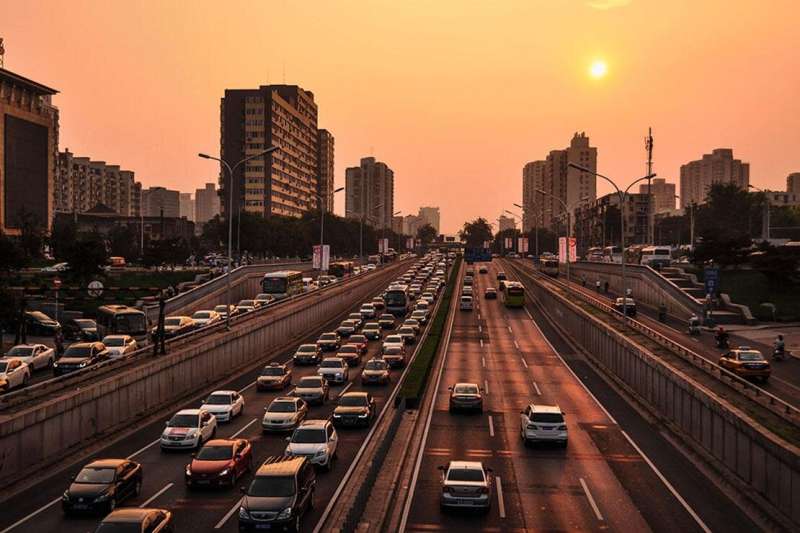Research reveals promising shifts in pollution during lockdown

Fluctuations in commuter behavior and air quality are always a preoccupation for Matthew Adams. So, it is with particular interest that the air-pollution scientist is examining the current extraordinary situation, where reduced traffic congestion across the GTA might be leading to improved breathing conditions.
"Our research is really focused on trying to understand air pollutants that we are breathing every day at ground level," Adams said in a recent interview on the VIEW to the U podcast.
An assistant professor in the Department of Geography at UTM since 2017, Adams's background is in environmental analysis. He examines air contaminants, primarily fine particulate matter, nitrogen oxide, and ozone, and their impact in and around the Greater Toronto Area (GTA).
"We want to know how the urban environment really shapes an individual's exposure to air pollution, so thinking about the ways that they commute to work from where they live, where they spend time outside, and what aspects of those environments can affect someone's individual level of air quality, with really the long-term goal of being able to estimate a person's air pollution exposure without having to put a personal monitor on them," he says.
Since the coronavirus-led shutdown in March, Adams's research group is also interested in seeing how the effects of modified urban behavior develop across Ontario.
Adams says that changes in fine particulate matter has so far been negligible because this pollutant is residential, and people are likely keeping up the regular levels by contributing from their separate dwellings while sidelined at home.
However, they are seeing more significant effects related to transportation-dominated pollutants in the GTA and major urban environments: notably nitrogen dioxide that is emitted from vehicle exhaust and turns into ozone, another pollutant. Adams says nitrogen dioxide generally decreases as we transition from winter to summer, but the decline in levels of ozone has been notable over the past few months. He explains that while the chemical properties associated with the ozone layer is beneficial to all of us on the globe, breathing in ozone at ground level has negative health outcomes, including reduced lung function and worsened symptoms for people with conditions like asthma and emphysema.
Their analysis of this data is still a work in progress, says Adams, and it will take time to unpack all the factors contributing to this changed environment that includes less cars on the roads but also an increase in delivery trucks dropping off packages to those staying at home.
Like many researchers around the world, his team is somewhat sidelined until regular research activity resumes. Their usual technologies to measure air quality include passive monitors that are fixed to poles or posts, and a mobile laboratory they drive around to measure air pollution. They have identified some workarounds for data collection during the current shutdown, including Ministry of Environment (Canada) long-term monitoring networks.
"It is less spatially detailed data, but still data that's existing, and allows us to see what's happening in the trends, what's happening broadly across Canada, and then we're starting to rely more on these satellite platforms that have instruments that can measure different air pollutants."
In a post-COVID era, Adams sees that movement and work in and around the GTA could resume, with construction activities and commuter behavior returning to regular levels. However, he also sees this as a potential turning point for researchers as well as people living in urban environments.
"Maybe people will begin to change their behavior, and I think if we could have a policy to try and reduce air pollution across Ontario, one of the easiest ones would be trying to reduce congestion," says Adams.
"It is also definitely an opportunity to have somewhat of a natural experiment. For example, if we know fewer vehicles are on the road, we could almost parallel that to the electrification of a lot of vehicles. What would happen if we electrified a certain percentage of our fleet? This might be able to build into that story of the potential benefits of electric vehicles. Or what happens when we shift to a certain percentage of our population working from home or implementing a four-day work week? I think we are going to see a lot of interesting studies as we continue through this process."
Provided by University of Toronto Mississauga



















